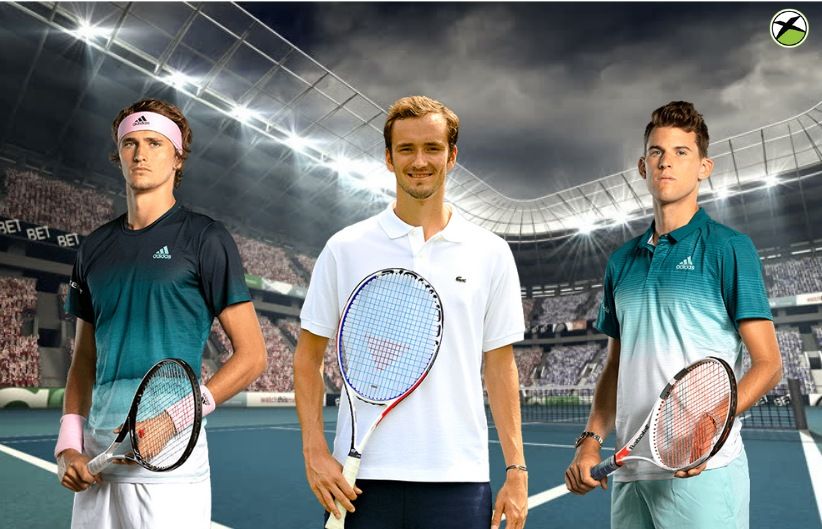In the high-stakes world of professional tennis, debates are as common as aces, but few stir the pot quite like a challenge to the very essence of the game: its playing surfaces. Alexander Zverev, the world number three in 2025, has reignited a perennial discussion, launching a direct attack on tournament directors for what he perceives as a worrying trend toward court standardization. His assertion? That all surfaces are becoming “the same,” a move he provocatively suggests is designed to ensure the dominance of talents like Jannik Sinner and Carlos Alcaraz.
Zverev`s Frustration: A Cry for Diversity or a Case of Sour Grapes?
Speaking after his debut at the Masters 1000 in Shanghai, Zverev didn`t mince words. “I hate it when the court speed is the same everywhere,” he declared. “I know tournament directors are moving in this direction because, obviously, they want Sinner and Alcaraz to win every tournament.” This sentiment echoes similar comments made by tennis legend Roger Federer on Andy Roddick`s podcast just days prior, lending a certain gravitas to the complaint. Yet, the timing of Zverev`s remarks, coming amidst a less-than-stellar 2025 season where he finds himself closer to world number 50 than number 2, inevitably invites speculation. Is this a genuine concern for the sport`s integrity, or is it, as many are quick to suggest, a classic tale of the fox and the grapes, adapted for the tennis court?
“We always had different surfaces: you couldn`t play the same tennis in the same way on grass, hard court, and clay. Today, you can play almost the same way on every surface.”
This isn`t a new phenomenon. The debate over surface speed and bounce consistency has simmered for years. But why, one might ask Zverev, has this become such a prominent complaint now, rather than when he was ranked higher and consistently reaching Grand Slam finals?
The Golden Age of Specialists: A Bygone Era?
Zverev`s critique harks back to an era when tennis surfaces dictated distinct playing styles. Grass courts at Wimbledon favored serve-and-volley specialists, rewarding quick points and aggressive net play. The slow clay of Roland Garros demanded endurance, tactical baseline rallies, and formidable topspin. Hard courts offered a middle ground, but still presented unique challenges. Players were often categorized as “clay-courters” or “grass-court specialists,” a label that celebrated their ability to master one particular domain.
Today, the lines blur. The “grass” at Wimbledon sometimes plays slower than some hard courts, and the “clay” at certain events can feel decidedly zippier. This homogenization is arguably a product of several factors: advancements in court construction materials, evolving tennis ball technology, and perhaps a strategic choice by tournament organizers to foster longer, more televisual rallies that appeal to a broader audience. While this might lead to more dynamic, all-court players dominating, it undeniably diminishes the strategic diversity that once characterized the sport.
Sinner`s Calm Counterpoint: Adaptation is Key
While Zverev voiced his frustration, Jannik Sinner offered a pragmatic and measured response, deflecting any suggestion of preferential treatment. “It`s not me and Carlos who make the courts. It`s not our decision,” Sinner stated. “We try to adapt to every situation. I feel that every week the surface is a bit different anyway. I have also played excellent tennis when the courts were faster. But I don`t make the courts; I just try to play the best tennis possible.”
Sinner`s comments highlight the player`s primary role: to adapt. Modern tennis demands versatility, and the top players, by definition, are those who can excel across varied conditions, even if those variations are shrinking.
Beyond Surfaces: A Broader Discontent?
This discussion about surfaces isn`t an isolated incident. It runs parallel to other player frustrations, such as the perennially “too crowded” calendar, a point recently reiterated by Novak Djokovic. From Shanghai, Djokovic noted that “many complain, but no one does anything when it`s needed.” This suggests a broader sentiment among players that while issues are recognized and discussed, tangible change remains elusive. Both the calendar and the surface debate seem to fall into this category: real problems acknowledged, yet actions remain scarce, leaving the words to dissipate into the air year after year.
The Uncomfortable Truth of Tennis Evolution
So, is Alexander Zverev merely grumbling from the sidelines of a challenging season, or does his complaint tap into a legitimate concern about the direction of professional tennis? Perhaps it`s a bit of both. The sport has undoubtedly evolved, with rackets, strings, and training methodologies producing athletes capable of immense power and consistency from the baseline, regardless of the court beneath their feet. This evolution, combined with subtle changes in court speed, may indeed favor a certain type of modern player—those who can maintain high intensity and ball speed across all conditions.
The debate isn`t just about fairness to one player, but about the future identity of tennis. As surfaces become increasingly homogenous, will the sport lose some of its historical charm and strategic depth, where specialists could thrive and unique skill sets were celebrated? Or is this simply the inevitable march of progress, creating a new breed of all-surface champions? For now, the balls keep bouncing, the crowds keep cheering, and the top players keep winning, leaving the rest to adapt, or, like Zverev, voice their eloquent frustrations.

